According to the Apple Docs when a video is playing and the app is sent to the background the player is automatically paused:

What they say to do is remove the AVPlayerLayer (set to nil) when the app is going to the background and then reinitialize it when it comes to the foreground:

And the best way they say to handle this is in the applicationDidEnterBackground and the applicationDidBecomeActive:

I used NSNotification to listen for the background and foreground events and set functions to pause the player & set the playerLayer to nil (both for background event) and then reinitialized the playerLayer & played the player for the foreground event. These are the Notifications I used .UIApplicationWillEnterForeground and .UIApplicationDidEnterBackground
What I've come to find out is that for some reason if you long press the Home button and that screen that pops up that says "What can I help you with" appears, if you press the Home button again to go back to your app the video will be frozen and using the 2 Notifications from above won't prevent it. The only way I found to prevent this is to also use the Notifications .UIApplicationWillResignActive and .UIApplicationDidBecomeActive. If you don't add these in addition to the above Notifications then your video will be frozen on the Home button long press and back. The best way that I've found to prevent all frozen scenarios is to use all 4 Notifications.
2 things I had to do differently from my code above was to set player and playerLayer class variables as optionals instead of implicitly unwrapped optionals and I also added an extension to the AVPlayer class to check to see if it's playing or not in iOS 9 or below. In iOS 10 and above there is a built in method .timeControlStatus AVPlayer timer status
my code above:
var player: AVPlayer?
var playerLayer: AVPlayerLayer?
Add an extension to the AVPlayer to check the state of the AVPlayer in iOS 9 or below:
import AVFoundation
extension AVPlayer{
var isPlaying: Bool{
return rate != 0 && error == nil
}
}
Here is the completed code below:
var player: AVPlayer?
var playerLayer: AVPlayerLayer? //must be optional because it will get set to nil on background event
override func viewDidLoad() {
super.viewDidLoad()
// background event
NotificationCenter.default.addObserver(self, selector: #selector(setPlayerLayerToNil), name: UIApplication.didEnterBackgroundNotification, object: nil)
// foreground event
NotificationCenter.default.addObserver(self, selector: #selector(reinitializePlayerLayer), name: UIApplication.willEnterForegroundNotification, object: nil)
// add these 2 notifications to prevent freeze on long Home button press and back
NotificationCenter.default.addObserver(self, selector: #selector(setPlayerLayerToNil), name: UIApplication.willResignActiveNotification, object: nil)
NotificationCenter.default.addObserver(self, selector: #selector(reinitializePlayerLayer), name: UIApplication.didBecomeActiveNotification, object: nil)
configurePlayer()
}
override func viewWillAppear(_ animated: Bool) {
super.viewWillAppear(animated)
// this is also for the long Home button press
if let player = player{
if #available(iOS 10.0, *) {
if player.timeControlStatus == .paused{
player.play()
}
} else {
if player.isPlaying == false{
player.play()
}
}
}
}
@objc fileprivate func configurePlayer(){
let url = Bundle.main.url(forResource: "myVideo", withExtension: ".mov")
player = AVPlayer.init(url: url!)
playerLayer = AVPlayerLayer(player: player!)
playerLayer?.videoGravity = AVLayerVideoGravityResizeAspectFill
playerLayer?.frame = view.layer.frame
player?.actionAtItemEnd = AVPlayerActionAtItemEnd.none
player?.play()
view.layer.insertSublayer(playerLayer!, at: 0)
NotificationCenter.default.addObserver(self, selector: #selector(playerItemReachedEnd), name: NSNotification.Name.AVPlayerItemDidPlayToEndTime, object: player.currentItem)
}
@objc fileprivate func playerItemReachedEnd(){
// this works like a rewind button. It starts the player over from the beginning
player?.seek(to: kCMTimeZero)
}
// background event
@objc fileprivate func setPlayerLayerToNil(){
// first pause the player before setting the playerLayer to nil. The pause works similar to a stop button
player?.pause()
playerLayer = nil
}
// foreground event
@objc fileprivate func reinitializePlayerLayer(){
if let player = player{
playerLayer = AVPlayerLayer(player: player)
if #available(iOS 10.0, *) {
if player.timeControlStatus == .paused{
player.play()
}
} else {
// if app is running on iOS 9 or lower
if player.isPlaying == false{
player.play()
}
}
}
}
DON'T FORGET TO ADD THE isPlaying EXTENSION TO THE AVPlayer


